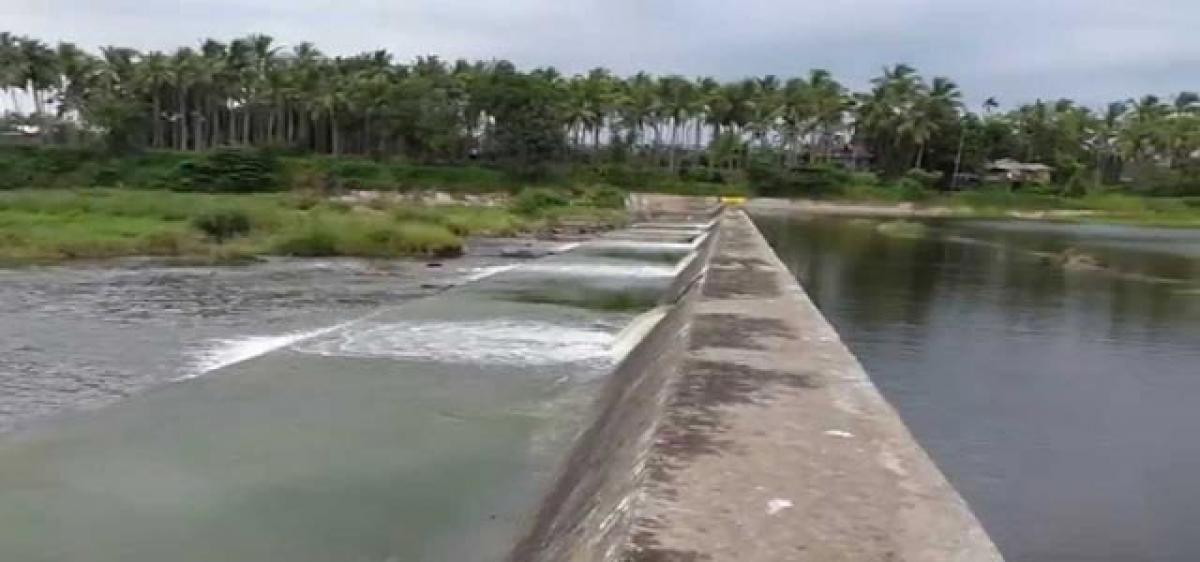Live
- ED conducts raids at two places in Bengal in chit fund case
- BJP Tamil Nadu President Expresses Confidence In Resolving Tungsten Mining Concerns In Madurai
- Karnataka Reviews Lake Safety Ahead of Monsoon: Minister Bhosaraju Tells Upper House
- Udupi MP’s queries, More key highways on high-priority
- Investing in Skills: Education Loans Paving the Way for Career Success
- Ghaggar river’s two stretches identified as polluted: Govt
- ICC chief Jay Shah meets Brisbane 2032 Olympics organising committee CEO
- Oxford Grammar High School Celebrates 44th Annual Sports Day with Grandeur
- Indian banking sector’s health remains robust, govt policy working very well: Top bankers
- iOS 18.2 Unveiled: New Features with ChatGPT Integration Revolutionize Your iPhone
Just In

Historically based on the movement of the Sun, the year is divided into different seasons. The historians coined specific words to define the season in winter, summer and rainy season in local languages dialects. Some of these could be seen from the “Pedda Bala Siksha” books. With the introduction of electronic media, weatherman became a bad scapegoat.
Historically based on the movement of the Sun, the year is divided into different seasons. The historians coined specific words to define the season in winter, summer and rainy season in local languages dialects. Some of these could be seen from the “Pedda Bala Siksha” books. With the introduction of electronic media, weatherman became a bad scapegoat.
With the movement of the Sun from South to North between 22nd December and 22nd June, the day length increases and there onwards the day length decreases with the sun moving from the north to the south, between March 23rd and September 23rd, the sun being on the equator.
The temperature increases with the day length. Thus the temperature presents a sinusoidal pattern reaching the maximum in the summer and the Minimum in the winter similar to diurnal cycle. However, these are modified by local and regional conditions [static (non-moving) and dynamic (moving)].
Let us see the average the maximum and the minimum temperatures reached at four locations in March, April, May & June (table 1). The highest temperature varies with the western disturbances condition in summer months and lowest temperatures in winter months respectively due to heat and cold waves.
The highest temperatures recorded at different places are nothing to do with the so-called global warming or El Nino factor wherein these are insignificant when compared with the Western disturbances created changes.
In the case of rainfall, Telugu states are divided in to three met sub-divisions. The rainfall extremes and averages for the three met sub-divisions are given in Table II.
Annual rainfall of all the combined three met sub-divisions show 132 year cycle [See the table which contains rainfall and water flow in Krishna River]. The two Telugu states receive rainfall in two monsoons, namely southwest and northeast – they follow 52-year cycle in opposite form.
During the northeast monsoon, the cyclonic activity play vital role. The cyclonic activity also follows the 52-year cycle northeast monsoon pattern. In addition to these two monsoon seasons, cyclonic activity in April and May create devastating conditions along with rainfall.
Also, we receive “localised” thunderstorm rain and hailstorms. Here one important point is the role of Western Ghats in southwest monsoon and Eastern Ghats in northeast monsoon season. Windward direction good rains and on lee-ward direction poor rains is common system.
Because of this high variation in rainfall, the watershed programme failed in Telugu states. Same is the problem with tanks/lakes irrigation program.
Net area cultivated under all sources in Telangana during 2008-09 to 2014-15 varied [in Lha] as: 18.28, 14.93, 20.04, 19.85, 17.74, 22.9 & 17.26. The percentage area under tanks varied as: 13.03, 3.82, 11.87, 9.22, 8.91, 10.05 & 5.62, and though irrigation wells [bore wells and dug wells] increased but the percentage area under irrigation has not changed much during that period in percentage as: 72.09, 84.33, 69.63, 71.69, 83.77, 74.83 & 81.87.
The Telangana government is planning to double the net irrigated area by spending lakhs of crores [one crore acres]. Under cultivation is 49.61 lakh hectares (43.2% of geographical area) but this is going on diverted for other activities at a racket speed by dumping the Land Acquisition Act of 2013.
Andhra Pradesh government wants to develop five lakh check dams, knowing very well the case of watersheds during its earlier stint. This money only helps the party cadre. Unfortunately some of the so-called inventers of new water saving systems (they were given titles like waterman) in north India – several newspapers published these stories – but they rarely discussed the success of that system under the variable rainfall conditions. (Writer is Former Chief Technical Advisor – WMO/UN)
By Dr S Jeevananda Reddy

© 2024 Hyderabad Media House Limited/The Hans India. All rights reserved. Powered by hocalwire.com







